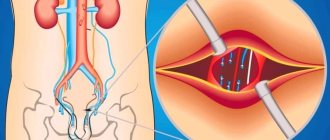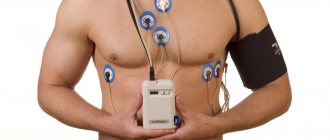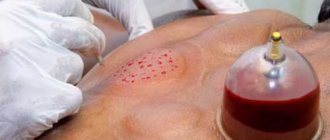How many poisons do you think poison us every day? Car exhaust fumes, nicotine, alcohol, nitrates in food... You can’t even list everything. They accumulate primarily in the blood, which carries harmful substances to all organs and systems, creating favorable conditions for impaired immunity and the development of all kinds of diseases.
Therefore, blood cleansing for a modern person is about to become as necessary a procedure as brushing your teeth.
How to cleanse your blood? And is this even possible? Yes. There is an effective method: plasmapheresis.
Purifying the blood
How this procedure was called in the media - “dry cleaning”, “laundry”, and “the path to eternal youth”... The peak of its popularity occurred in the early to mid-nineties. When disposable consumables turned out to be more accessible, and from the category of procedures, or, as they say in some places, operations, at the resuscitation level, it moved into the category of therapeutic, everyday, used, often “to the heap,” “just in case.” What are we talking about? Yes, about blood purification, or rather, about its main method - plasmapheresis. Of all those now known, this is the very first, after bloodletting. The first work on plasmapheresis appeared back in 1908 in Germany, then research expanded, but due to a number of technical difficulties, the plasmapheresis procedure was classified as a surgical operation for a long time. This technique received the general name “Gravity blood surgery”, and its place of implementation was equated to surgical operating rooms. Still, blood is a serious matter. With the advent of disposable plastic containers (gemakon), systems for intravenous infusions, as well as non-bulky centrifuges, the procedure became therapeutic and began to be used much more widely (the list of diseases for which plasmapheresis is indicated includes approximately 200 nosologies). If until the 70s, plasmapheresis as a therapeutic technique was more related to research procedures, then by the 80s and 90s it firmly took its place among the most important methods of influencing homeostasis and blood parameters. With the transition of this procedure to the category of routine, researchers have cooled down on plasmapheresis, because the method requires premises, equipment, consumables, and mandatory examination before starting treatment.
Indications for cytapheresis
- polyglobulia (increased number of red blood cells) and polycythemia vera - erythrocytopheresis is used;
- hyperleukocytosis (significantly increased number of white blood cells) – leukapheresis is performed;
- sickle cell anemia – erythrocytopheresis is used;
- thrombocythemia – thrombocytopheresis is appropriate;
- obtaining stem cells for transplantation;
- HLA mismatch in allogeneic bone marrow transplantation.
Tablets or plasmapheresis? The choice is yours!
These conditions have pushed plasmapheresis slightly towards exotic techniques that are too complex for outpatient clinics or small clinics. And the constant fuss of drug manufacturers and dealers around efferent methods (blood secretion and its external modification) as little tested (and this is for 100 years), as expensive and complex, as well as active work with doctors to promote drugs on the medical market, have noticeably weakened interest to plasmapheresis. Why, such a factor as a reliable, statistically proven by a number of early studies, reduction in the consumption of drugs in the treatment of serious diseases, like a red mantle, irritates the manufacturers of hormonal drugs. Why do they need such a competitor? Therefore, ambiguous works periodically appear in the medical press, hinting at the dubiousness of the plasmapheresis method in therapy. The goal is simple - to discourage practitioners from even the shadow of a thought about using plasmapheresis in the treatment of a particular disease where it is necessary to use corticosteroids, for example, atopic dermatitis, bronchial asthma, scleroderma, lupus. After all, it is obvious that a reduction by a third in the consumption of prednisolone by patients will primarily affect the income of pharmacists-manufacturers and sellers. And the fact that patients’ bones are destroyed, Cushing’s syndrome (obesity) and stomach ulcers develop cannot but rejoice - after all, the volume of drugs consumed is not decreasing, but increasing.
Contraindications
There are absolute and relative contraindications to plasmapheresis:
The absolute ones include:
- Acute bleeding;
- Allergic reactions to components used in plasmapheresis;
- Severe brain disorders.
Relative ones include:
- Hypotension;
- Severe anemia;
- Hypoproteinemia;
- Phlebitis of peripheral veins;
- Alcohol intoxication;
- Withdrawal syndrome;
- Acute period of infectious diseases;
- Hemostasis disorders;
- Menstruation;
- Mental disorders.
What do we treat without crippling?
What diseases have interested drug manufacturers avoided in an effort to ward off treating doctors? Definitely poisoning, yes, plasmapheresis has no rivals here. Although there are sorbents and hemosorption, plasmapheresis still has no equal in terms of the quality of “cleaning”. Alcohol and drug intoxication, poisoning with pills - all this can be treated without much difficulty by “blood purification”. Moreover, in psychiatric practice, where patients are forced to consume rather toxic drugs in considerable doses, plasmapheresis has found its way to the hearts of patients and doctors. The situation is serious - when the clinical condition requires an increase in the dose, and toxicosis requires discontinuation of the drug altogether. And then plasmapheresis comes to the rescue. Dosages of drugs after blood purification procedures are reduced by half, or even more. And with schizophrenia, the patient’s general well-being noticeably improves. For a long time there was a ridiculous opinion that plasmapheresis is contraindicated during pregnancy. Why? Hard to say. But this nonsense was successfully refuted by scientists from Moscow and St. Petersburg, eliminating toxicosis in the first half of pregnancy and severe toxicosis in the second. And in case of placental insufficiency, when seemingly full-term children are born very small, “undernourished” and sickly, it was plasmapheresis that made it possible to carry and raise normal children. A lot of kind words can be said about plasmapheresis for complicated childbirth, inflammation - thousands and tens of thousands of mothers and children have been saved. However, sometimes you hear strange statements: “Plasmapheresis? Are they still making it? It’s for heavy people...” It’s absurd... In Europe and America, plasmapheresis is widely used in cosmetology as a naturally rejuvenating procedure, and a little experience working with athletes has shown us that after breaking records, improved quality and reduced blood viscosity allow the same football players to recover faster. And there is no talk of any doping here.
Expert opinion
Alexey Vasiliev, head of the neurology department, candidate of medical sciences, neurologist of the highest category
“High-volume plasmapheresis is considered the gold standard treatment for a wide range of neurological diseases. It is performed for patients with severe, aggressive multiple sclerosis, acute disseminated encephalomyelitis, myasthenia gravis, chronic inflammatory demyelinating polyneuropathy and many other diseases. This treatment method has a pronounced therapeutic effect, is safe and accessible to patients.
At the Department of Neurology of the Yusupov Hospital, plasmapheresis is performed with a volume of 2-2.5 liters per session. Such intensive use of plasmapheresis allows you to maximally cleanse the body of toxins and antibodies that destroy the myelin sheath of nerve fibers. After several sessions, patients note a decrease in the symptoms of the underlying disease and a general improvement in well-being.”
Unraveling the mystery of plasmapheresis
Currently, plasmapheresis is divided into Membrane and Centrifugal. In the first, the blood is pressed through a filter, and the plasma is separated from the formed elements and collected in a separate reservoir. In the second, the blood is subjected to gravitational influence at high speeds, the cells settle to the bottom, and the plasma remains on top and is removed. At first glance it seems very similar. But this is only at first glance. Membrane filters require constant mixing of anti-clotting drugs and saline solution into the blood. It turns out that up to a quarter or even a third of the volume of the squeezed plasma is made up of them; in addition, the membrane has an unimportant effect on the wall of the red blood cell, and after that, instead of working, carrying oxygen, it is regarded by the body as damaged and sent “to the cemetery” in spleen This does not happen with centrifugal plasmapheresis. Separation occurs under the influence of gravity - the plasma completely corresponds to the plasma in the body, and red blood cells tolerate such influence easily.
What are the positive effects on the body?
- Plasmapheresis reduces the amount of harmful substances circulating in the plasma;
- Cleanses the blood and all tissues of the body;
- Improves blood supply to all organs and systems by purifying the blood and removing cholesterol plaques;
- Activates brain function;
- The work of the heart is normalized, which stops attacks of angina pectoris;
- Improves the functioning of the liver and kidneys, resulting in the timely removal of toxins and harmful substances from the body;
- Strengthens the immune system;
- Improves skin structure;
- Promotes weight loss.
If I become a donor, let them teach me!
Plasmapheresis is not only a therapeutic procedure, but also a donor procedure. Perhaps what I say will be a discovery for the reader, but the main consumable material of the blood service is not red blood cells, but fresh frozen plasma. In general, the ratio of erythromass and plasma consumption in any clinic ranges from 1/10 to 1/50. And primarily because for a seriously ill patient, blood cells - oxygen transport - are not as important as coagulation factors and proteins. Therefore, plasma procurement is the most important task of blood transfusion stations and departments. However, compared to plasma, which can be stored in a frozen state for a year without harm, blood cells can withstand a maximum of a month. And even then, by the end of the term, they are of little use; it is a stretch to call them cells. Rather, these are already corpses of red blood cells. Sometimes you hear the question: Isn’t this harmful? - What? - Well, donate blood, do plasmapheresis? Everything is harmful if you don’t have a sense of proportion, and when you pick your nose, you’re bound to someday bury your finger in the vault of your skull. There are rules for donation: blood is donated no more than once every 2 months, plasma no more than once every 2 weeks, and platelets no more than once a week. All these components are very necessary. And, considering that red blood cells are stored for up to 35 days, and platelets for 3-5 days in a special shaker, you can imagine how important donation is.
What is it used for?
The purpose of plasmapheresis is to remove existing toxic and metabolic wastes in plasma that cause various diseases and detoxify the body. During the procedure, harmful substances such as:
- Toxins;
- Harmful proteins;
- Hormones;
- Antigens;
- Antibodies;
- “Bad” lipoproteins;
- Infectious agents;
- Dead cells of the immune system;
- Mediators of inflammation;
- Excess fibrinogen;
- Products of tissue and cellular decay.
Briefly about the main thing
However, let's return to plasmapheresis. Isn't it harmful to do it? No, it's not harmful. Once every six months or a year. This is completely normal. Especially in our time, when the poisoning of the body has become normal. How long does the process take? This depends on the volume of plasma removed. But the average time is about one and a half hours per procedure. Is there a possibility of catching some disease? We are talking about vector-borne infections: HIV, syphilis, hepatitis B and C - no. All consumables and instruments are sterile and disposable, and medical personnel undergo an annual medical examination. And now about the most important thing. Why is plasmapheresis so good? What functions does it affect? In order to understand the therapeutic meaning of the procedure, you need to imagine the ratio of blood and water in the body. Moreover, water is the most important factor here. Let's try to answer the question: if there is more water in a sponge in % than the sponge itself, what is in what? Water in a sponge and sponge in water? Why is that? Yes, because the volume of water in the body is about 70%. And only 12% is blood. Moreover, there the ratio of cells to the liquid itself is almost 1:1, that is, half (6%). Why is water in the body so interesting? First of all, by the fact that, having dissolved proteins, fats, carbohydrates, salts and microelements, this water began to be called intercellular and intracellular fluid and is the basis for all biochemical processes. The cell lives, absorbs various substances, processes, and throws out waste. Sometimes it dies and then it itself becomes waste. Where does the cell throw out “garbage”? And literally “out the window” into the intercellular space. From there it enters the lymph, from the lymph into the venous blood, and it delivers all the “nasty” to the kidneys, filtering and freeing the body from acids, salts and other things. Any inflammation increases blood viscosity. Is there a lot of inflammation in the body of a healthy person? Quite a lot. He doesn't notice them, but they are there. And the carriage of chronic infections, including sexually transmitted infections, can remain undetected for years. Therefore, as we develop and age, toxic products of metabolism and inflammation accumulate in tissues - all of them actively draw water from surrounding cells, aging them. Apparently, this is why plasmapheresis procedures most clearly manifest themselves in cosmetology, because the removal of toxic substances from the blood, and then from the intercellular space, produces a “rejuvenating” effect on the entire body, and not just on the skin. In the treatment of hypertension, allergies, bronchial asthma, diabetes mellitus, plasmapheresis is used and gives an amazing effect, from completely eliminating medications to replacing strong ones with more moderate ones. In our Clinic, we have been engaged in blood purification for many years: plasmapheresis, cytapheresis and ultraviolet treatment of blood and its components. We have gained a wealth of experience in the treatment of: rheumatoid arthritis, hypertension, furunculosis and phlegmon of soft tissues, drug diseases, acute and chronic allergic reactions, chronic fatigue syndrome. Also, blood purification gives good results in: vascular damage due to diabetes, complications of the use of corticosteroids in systemic diseases, chronic inflammation of the female genital area, problems with unfused sutures after operations, prevention of strokes due to increased blood viscosity, obliterating diseases of the blood vessels of the legs, excess cholesterol in the blood . MK CELT specialists work on very reliable and state-of-the-art imported equipment. For plasmapheresis and other procedures, we use the best highly efficient centrifugal method for separating plasma and cells. In this case, the patient feels calm and comfortable, and the procedure is tolerated painlessly. Perhaps someone will say that we do not have the lowest prices, but we all know that we are not such rich people that we can be treated for pennies. Health is expensive, and looking for cheap methods means risking your health. Start a new life today!
2. Types of plasmapheresis depending on the technique
Plasmapheresis is classified according to the method used:
- filtration (membrane);
- gravity (centrifuge);
- cascade.
Filtration plasmapheresis
based on passing blood through filter membranes.
Gravity
– produced by centrifugation with a constant or variable frequency. The cascade plasmapheresis technique is based on the use of repeated filtration, in which a special filter allows only low molecular weight proteins to pass through. This technique arose later than others and expanded the scope of plasmapheresis. It is effective in the treatment of vascular diseases (cholesterol plaques, atherosclerosis, thrombosis, aneurysms), which are the most common cause of death.
How does the procedure work?
On the appointed day, the patient comes to the treatment room. He is asked to take a comfortable position on the couch. The catheters are then carefully inserted. Through them the collection and subsequent return of biological material will be carried out. Blood obtained from a vein in one arm passes through a plasma separator. There it is divided into plasma and formed elements.
The latter soon return back to the bloodstream. The isolated plasma is transferred to a fractionator. There it is filtered. Then it is also returned to the vein.
Once the procedure is complete, the needles are removed. The entire session usually takes about one and a half to two hours.










